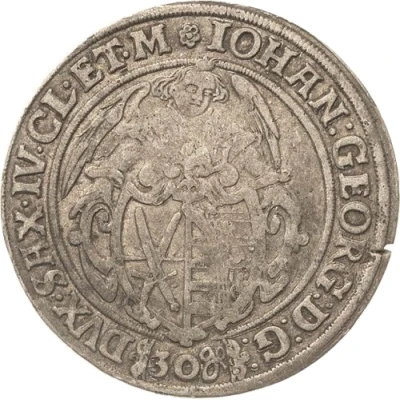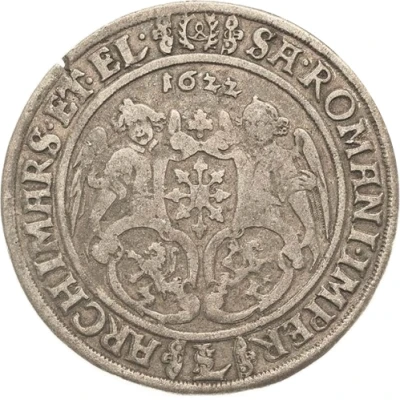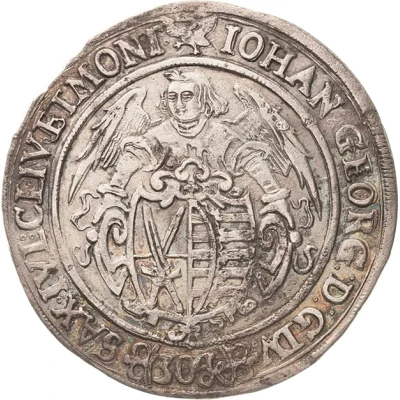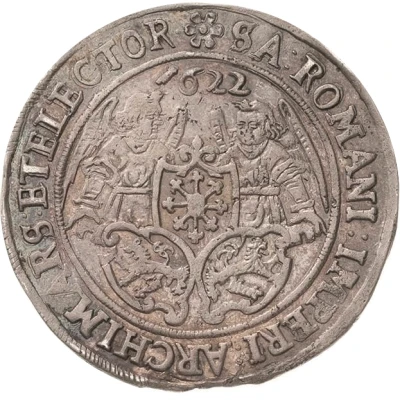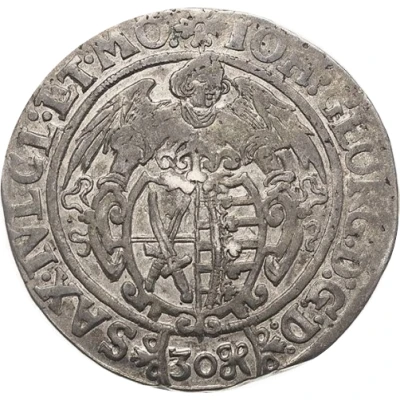
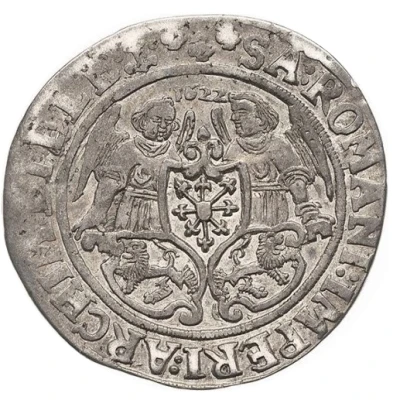

© Leipziger Münzhandlung und Auktion Manfred Höhn
30 Groschen - John George I
1622 year| Silver | - | - |
| Issuer | Electorate of Saxony (Albertinian Line) (German States) |
|---|---|
| Prince elector | John George I (Hans Georg I) (1591-1656) |
| Type | Standard circulation coin |
| Year | 1622 |
| Value | 30 Groschen (½) |
| Currency | Thaler (1493-1805) |
| Composition | Silver |
| Shape | Round |
| Demonetized | Yes |
| Updated | 2024-10-05 |
| Numista | N#193908 |
|---|---|
| Rarity index | 100% |
Reverse
Date above 2 winged cherubs and 3 arms, mintmark W at top in legend.
Script: Latin
Comment
Slg. Kernbach 3081Mintmark anchor and 3 swans - Zwickau
Interesting fact
One interesting fact about the 30 Groschen coin from the Electorate of Saxony (Albertinian Line) is that it was minted during a time of great economic and political change in Europe. The Thirty Years War had just ended in 1648, and many German states, including Saxony, were struggling to rebuild their economies and maintain political stability. Despite these challenges, the coinage of Saxony during this period was known for its high quality and consistency, with the 30 Groschen coin being a prime example. It was made of silver, which was a valuable and sought-after metal at the time, and featured an elegant design that reflected the cultural and artistic influences of the region. The coin's mintage was also carefully regulated, with strict controls in place to ensure its authenticity and value. Overall, the 30 Groschen coin from the Electorate of Saxony (Albertinian Line) is a fascinating piece of history that provides a glimpse into the economic, political, and cultural landscape of 17th-century Europe.
